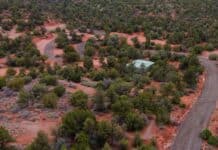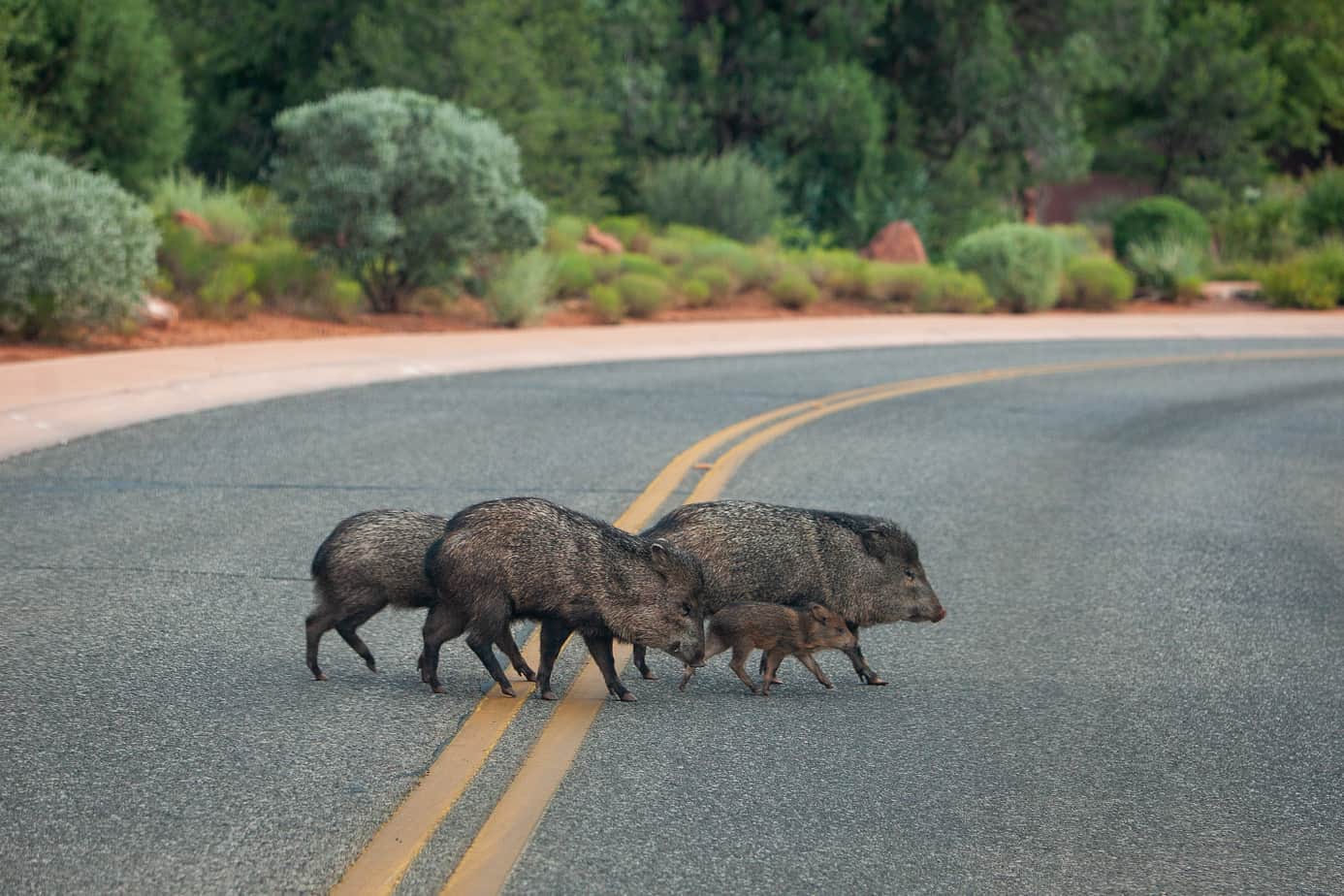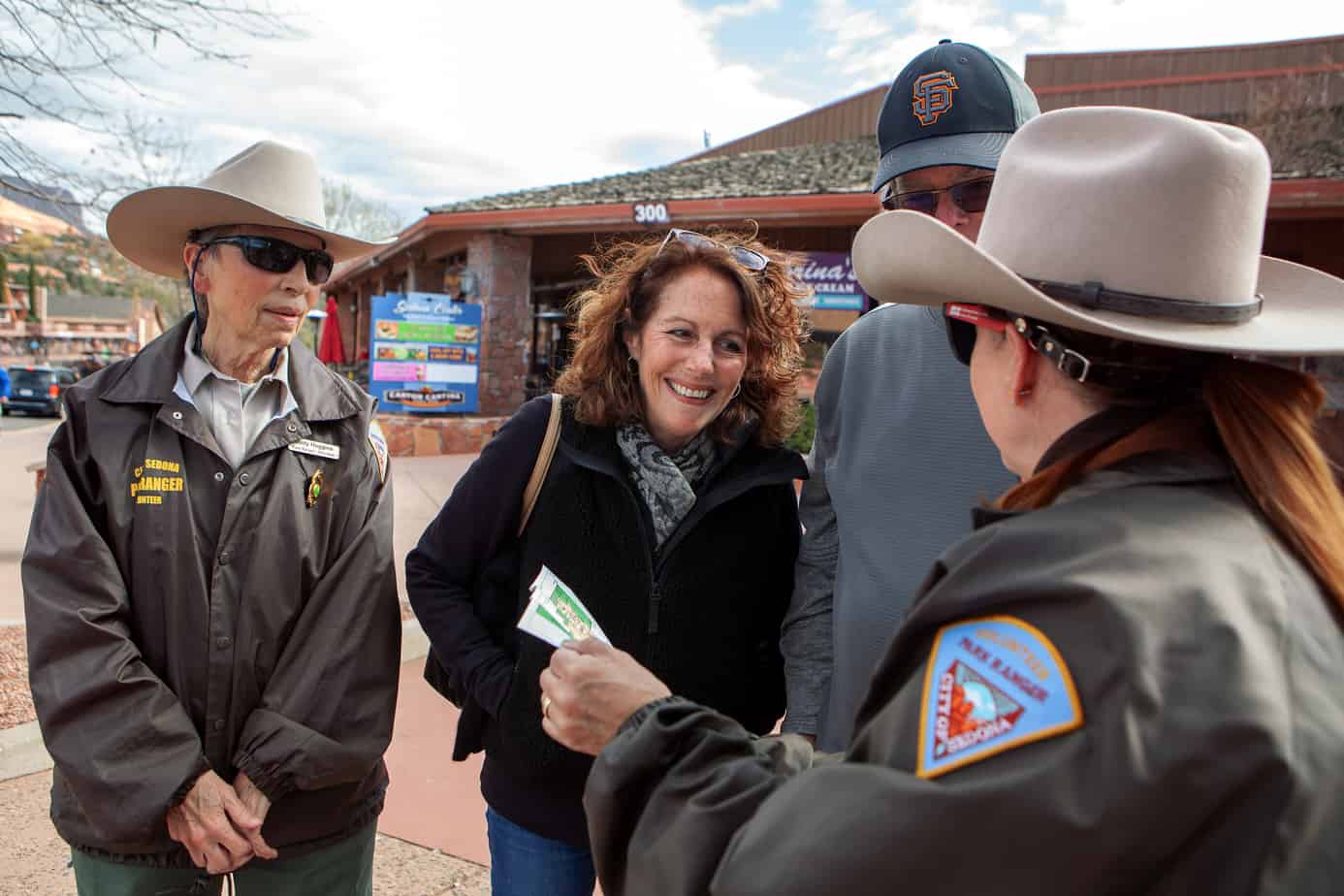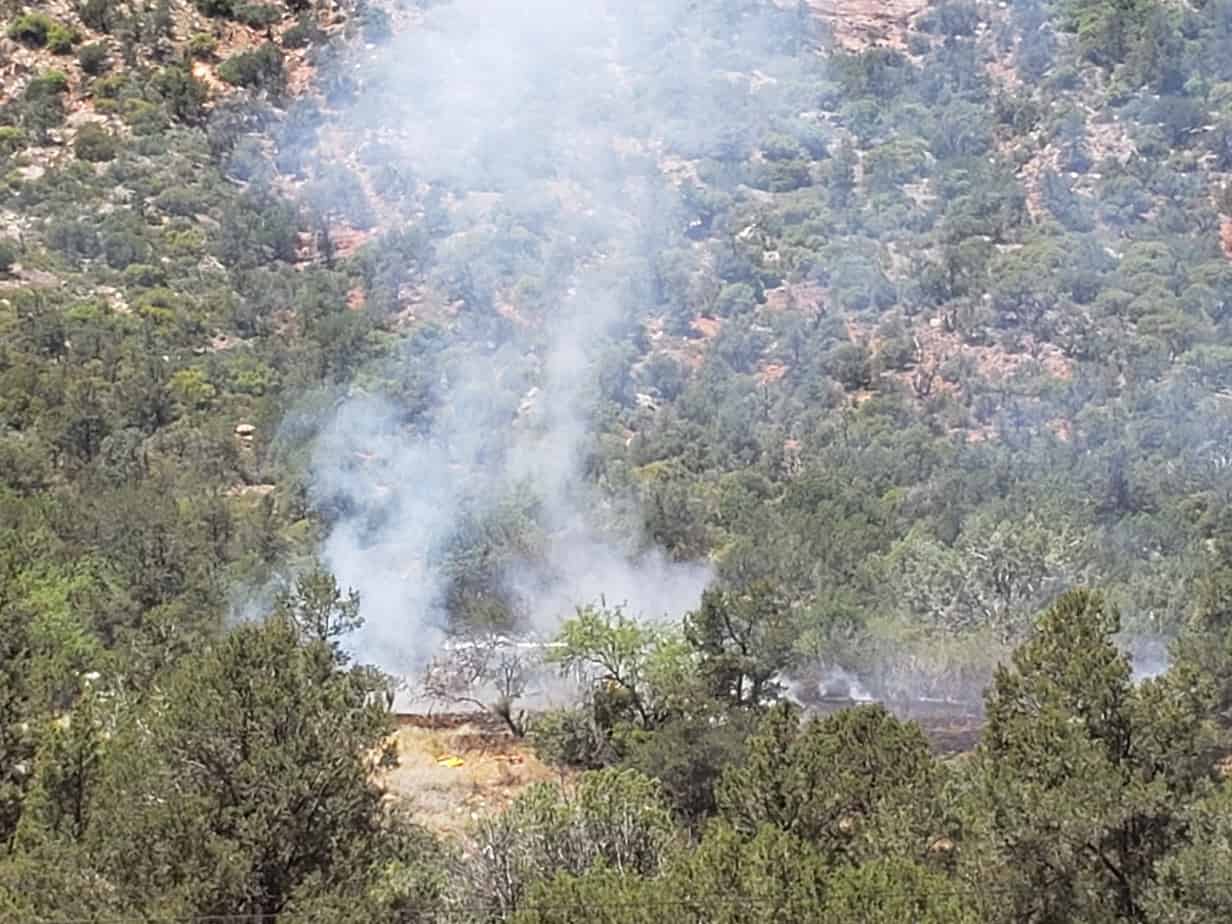Local Sedona hikers and visitors to the area often come across javelina on local trails. Many from outside Arizona encountering the animals for the first time are surprised by the large herding mammals they sometimes encounter.
Though some think javelina are a type of wild pig, they are actually members of the peccary family, a group of hoofed mammals originating from South America.
According to Arizona Game and Fish Department, javelina are common in much of central and southern Arizona. Javelina form herds of two to more than 20 animals and rely on each other to defend territory, protect against predators, regulate temperature and interact socially. They use washes and areas with dense vegetation as travel corridors. Javelina are most active at night, but they may be active during the day when it is cold.
- Arizona javelina are peppered black, gray and brown hair with a faint white collar around the shoulders. They are usually 40 to 60 pounds, stand approximately 19 inches tall, and live an average of 7.5 years.
- Their young are born year-round, most often from November to March, with an average litter of two. Newborns up to three months old are red-brown or tan and are called “reds”
- Javelina are known to have very poor eyesight, and may appear to be charging when actually they are trying to escape.
- They have a keen sense of smell and will roll in water and mud to cool off.
- They have a scent gland on their back; animals from the same herd stand side-by-side and rub each other’s scent glands with their heads; they use scents to identify animals from different herds.
- Javelina need a water source for drinking, and eat primarily plants, including cacti, succulent plants, bulbs, tubers, beans and seeds. They sometimes eat insects, garbage and grubs.
Javelina will occasionally visit properties in semi-urban areas near a wash or other natural desert. Javelina usually cause only minor problems for people by surprising them or eating a few plants.
AZGFD cautions that people should never feed javelina. This can cause them to become regular visitors and lose their fear of people, creating problems for the neighborhood and often leading to the death of the javelina.
Javelina occasionally bite humans, but incidents of bites are almost always associated with people providing the javelina with food. Javelina can inflict a serious wound. Defensive javelina behavior may include charging, teeth clacking or a barking, growling sound. Javelina may act defensively when cornered, to protect their young, or when they hear or smell a dog. Dogs and coyotes are natural predators of javelina, and they can seriously hurt or kill each other. Javelina around your home may also inadvertently attract mountain lions, because mountain lions prey on javelina.
Shelter can take the form of a porch, an area under a mobile home, a crawlspace beneath a house, or any other cave-like area. Javelina will seek shade during summer days and warmth during the winter, if these areas are not properly secured.
To discourage a javelina, immediately scare off animals by making loud noises such as banging pots, yelling or stomping on the floor. Also, throw small rocks in their direction, or spraying with vinegar, water from a garden hose, or large squirt gun filled with diluted household ammonia of one part ammonia and nine parts water. If the animal is confined, open a gate, have all people leave the area, and allow it to leave on its own.
Use fencing to deny javelina access. Electric fencing is most effective around gardens; try a single strand approximately eight to 10 inches above ground level. It is fairly inexpensive and can be obtained at farm and ranch supply stores. Check local ordinances before installing electric fencing.
Anyone bitten by a javelina must immediately seek medical attention. Whenever possible, the animal should be captured or killed and sent to a laboratory for rabies testing.
Javelina are classified as a big game species. It is unlawful to injure or kill game animals, even if they are causing a problem, unless certain rigorous provisions under the law have been met. Visit azgfd.gov for Arizona Game and Fish Department Hunting Regulations. It is unlawful to trap javelina.
Refer to ARS-17-239 on wildlife depredation and Arizona Game and Fish Department Hunting Regulations for more information.





















